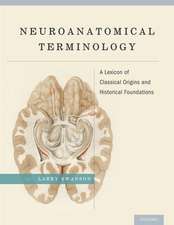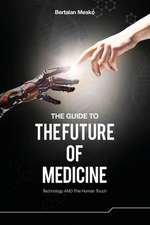Chemical and Physical Behavior of Human Hair
Autor Clarence R. Robbinsen Limba Engleză Hardback – 25 feb 2012
Features of the Fifth Edition:
Recent advances in the classification and characterization of the different proteins and genes in IF and keratin associated proteins in human hair are described.
The mechanism and incidence of hair growth and loss and hair density vs. age of males & females are described for Asians, Caucasians and Africans in different scalp regions.
Details of hair surface lipids and cuticle membranes provide a better understanding of the surface and organization of the CMC and its involvement in stress strain is presented.
Recent evidence demonstrates a more bilateral structure in curly hair and a more concentric arrangement of different cortical proteins in straighter hair.
SNPs involved in hair form (curl and coarseness) and pigmentation and genes in alopecia and hair abnormalities are described.
The latest biosynthetic scheme for hair pigments and structures for these and the different response of red versus brown-black pigments to photodegradation is described.
A new method for curvature on 2,400 persons from different countries and groups is used to assign curvature throughout this book.
Additional data for age and effects on diameter, ellipticity, elastic modulus, break stress and other parameters are presented with much larger data sets featuring statistical analyses.
Hair conditioning, strength, breakage, split ends, flyaway, shine, combing ease, body, style retention, manageability and feel parameters are defined and described.
A new section of different life stages by age groups considering collective and individual changes in hair fiber properties with age and how these affect assembly properties.
| Toate formatele și edițiile | Preț | Express |
|---|---|---|
| Paperback (1) | 2147.81 lei 6-8 săpt. | |
| Springer Berlin, Heidelberg – 23 aug 2016 | 2147.81 lei 6-8 săpt. | |
| Hardback (1) | 1989.30 lei 38-44 zile | |
| Springer Berlin, Heidelberg – 25 feb 2012 | 1989.30 lei 38-44 zile |
Preț: 1989.30 lei
Preț vechi: 2093.99 lei
-5% Nou
Puncte Express: 2984
Preț estimativ în valută:
380.70€ • 395.99$ • 314.29£
380.70€ • 395.99$ • 314.29£
Carte tipărită la comandă
Livrare economică 10-16 aprilie
Preluare comenzi: 021 569.72.76
Specificații
ISBN-13: 9783642256103
ISBN-10: 3642256104
Pagini: 825
Ilustrații: XXIII, 724 p.
Dimensiuni: 155 x 235 x 41 mm
Greutate: 1.28 kg
Ediția:5th ed. 2012
Editura: Springer Berlin, Heidelberg
Colecția Springer
Locul publicării:Berlin, Heidelberg, Germany
ISBN-10: 3642256104
Pagini: 825
Ilustrații: XXIII, 724 p.
Dimensiuni: 155 x 235 x 41 mm
Greutate: 1.28 kg
Ediția:5th ed. 2012
Editura: Springer Berlin, Heidelberg
Colecția Springer
Locul publicării:Berlin, Heidelberg, Germany
Public țintă
ResearchCuprins
Morphological and Macromolecular Structure.- Chemical Composition.- Genetic Control Involvement in Hair Fiber Traits.- Reducing Human Hair.- Bleaching Human Hair.- Interactions of Shampoo and Crème Rinse Ingredients with Human Hair.- Dyeing Human Hair.- Polymers and Polymer Chemistry in Hair Products.- The Physical Properties of Hair Fibers.- Definitions of Consumer Relevant Hair Assembly Properties and how these are controlled by Single Fiber Properties.- Appendix.
Textul de pe ultima copertă
Human hair is the subject of a remarkably wide range of scientific investigations. Its chemical and physical properties are of importance to the cosmetics industry, forensic scientists and to biomedical researchers. The fifth edition of this book confirms its position as the definitive monograph on the subject. Previous editions were recognized as “concise and thorough” (Journal of the American Chemical Society), “an invaluable resource” (Canadian Forensic Science Society Journal), and “highly recommended” (Textile Research Journal). Chemical and Physical Behavior of Human Hair is a teaching guide and reference volume for cosmetic chemists and other scientists in the hair products industry, academic researchers studying hair and hair growth, textile scientists and forensic specialists.
Features of the Fifth Edition:
•Recent advances in the classification and characterization of the different proteins and genes in IF and keratin associated proteins in human hair are described.
•The mechanism and incidence of hair growth and loss and hair density vs. age of males & females are described for Asians, Caucasians and Africans in different scalp regions.
•Details of hair surface lipids and cuticle membranes provide a better understanding of the surface and organization of the CMC and its involvement in stress strain is presented.
•Recent evidence demonstrates a more bilateral structure in curly hair and a more concentric arrangement of different cortical proteins in straighter hair.
•SNPs involved in hair form (curl and coarseness) and pigmentation and genes in alopecia and hair abnormalities are described.
•The latest biosynthetic scheme for hair pigments and structures for these and the different response of red versus brown-black pigments to photodegradation is described.
•A new method for curvature on 2,400 persons from different countries and groups is used to assign curvature throughout this book.
•Additional data forage and effects on diameter, ellipticity, elastic modulus, break stress and other parameters are presented with much larger data sets featuring statistical analyses.
•Hair conditioning, strength, breakage, split ends, flyaway, shine, combing ease, body, style retention, manageability and feel parameters are defined and described.
•A new section of different life stages by age groups considering collective and individual changes in hair fiber properties with age and how these affect assembly properties.
Features of the Fifth Edition:
•Recent advances in the classification and characterization of the different proteins and genes in IF and keratin associated proteins in human hair are described.
•The mechanism and incidence of hair growth and loss and hair density vs. age of males & females are described for Asians, Caucasians and Africans in different scalp regions.
•Details of hair surface lipids and cuticle membranes provide a better understanding of the surface and organization of the CMC and its involvement in stress strain is presented.
•Recent evidence demonstrates a more bilateral structure in curly hair and a more concentric arrangement of different cortical proteins in straighter hair.
•SNPs involved in hair form (curl and coarseness) and pigmentation and genes in alopecia and hair abnormalities are described.
•The latest biosynthetic scheme for hair pigments and structures for these and the different response of red versus brown-black pigments to photodegradation is described.
•A new method for curvature on 2,400 persons from different countries and groups is used to assign curvature throughout this book.
•Additional data forage and effects on diameter, ellipticity, elastic modulus, break stress and other parameters are presented with much larger data sets featuring statistical analyses.
•Hair conditioning, strength, breakage, split ends, flyaway, shine, combing ease, body, style retention, manageability and feel parameters are defined and described.
•A new section of different life stages by age groups considering collective and individual changes in hair fiber properties with age and how these affect assembly properties.
Caracteristici
Bible of hair science” Most thoroughly referenced hair book with more hair micrographs than any Only single author book thus more coherent with shared interconnections across subjects & chapters Larger data bases for hair properties Author has unique expertise in relationship of hair fiber properties to assembly behavior, hair structure & reactions, Includes supplementary material: sn.pub/extras
















